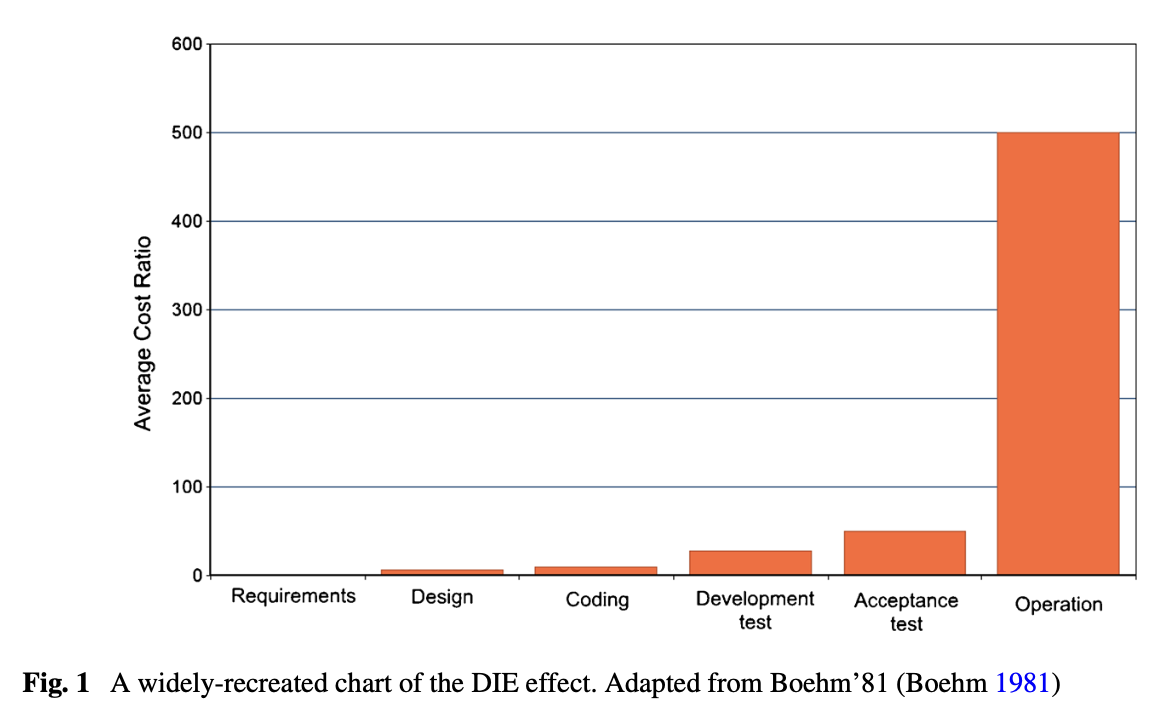Are Delayed Issues Harder to Resolve?
Reviewed by Greg Wilson / 2021-09-26
Keywords: Development Process, Faults
For over twenty years I've been teaching people about the figure shown below. It shows that the cost of fixing a bug grows exponentially as you move from one phase of development to another. Putting it another way, delaying work on an issue dramatically increases the cost of fixing it.

Turns out, it ain't so. Menzies2016 looked at data from 171 software projects over an eight year period and found that no, the effort to resolve issues doesn't increase this way. The authors are very careful in their definition of project phases, the way they attribute defects to particular phases, how they gathered and cleaned their data, and why they chose the statistical tests they used. It all culminates in a table showing how the median time to resolve issues in each phase compares with the median times of earlier and later phases, and no, there isn't the kind of steep growth in later phases that most developers believe there is. (And yes, they checked that developers do believe that with a survey.)
I'm still digesting the implications of this finding and wondering how widely it generalizes, but a quick check of the four undergraduate software engineering textbooks I still own revealed that all of them teach the "exponential increase" theory. That theory was based on careful analysis of the data available at the time, but as is so often the case in science, more and better data requires us to change our mind.
Menzies2016 Tim Menzies, William Nichols, Forrest Shull, and Lucas Layman: "Are delayed issues harder to resolve? Revisiting cost-to-fix of defects throughout the lifecycle". Empirical Software Engineering, 22(4), 2016, 10.1007/s10664-016-9469-x.
Many practitioners and academics believe in a delayed issue effect (DIE); i.e. the longer an issue lingers in the system, the more effort it requires to resolve. This belief is often used to justify major investments in new development processes that promise to retire more issues sooner. This paper tests for the delayed issue effect in 171 software projects conducted around the world in the period from 2006--2014. To the best of our knowledge, this is the largest study yet published on this effect. We found no evidence for the delayed issue effect; i.e. the effort to resolve issues in a later phase was not consistently or substantially greater than when issues were resolved soon after their introduction. This paper documents the above study and explores reasons for this mismatch between this common rule of thumb and empirical data. In summary, DIE is not some constant across all projects. Rather, DIE might be an historical relic that occurs intermittently only in certain kinds of projects. This is a significant result since it predicts that new development processes that promise to faster retire more issues will not have a guaranteed return on investment (depending on the context where applied), and that a long-held truth in software engineering should not be considered a global truism.